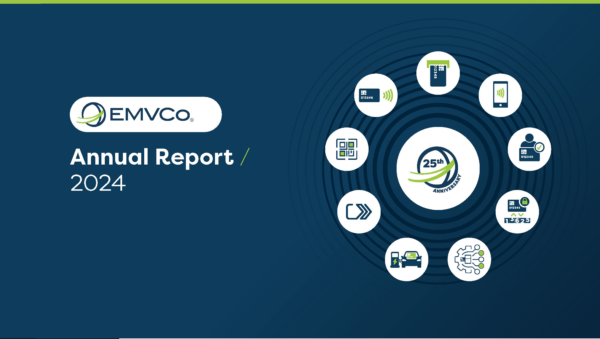EMVCo welcomed nearly 100 representatives from across the globe to its EMV® User Meeting held in Copenhagen, Denmark. As a country renowned for its progressive approach to creating a cashless society, it provided the perfect backdrop to discuss EMVCo’s latest achievements and plans for the coming year.
Highlighting the crucial role of testing
EMV Technology enables millions of card-based payments to be made seamlessly and securely worldwide. This level of reliability is only possible thanks to the various testing processes that confirm products and solutions meet the technical baseline for security, performance and compatibility when deployed.
While a number of Level 1, Level 2 and Level 3 test enhancements were discussed, key upcoming testing milestones include:
- The much anticipated launch of the testing process for the EMV® Contactless Kernel Specification to support the evolution of contactless and mobile payments – simplifying global acceptance for merchants, solution providers and payment systems.
- The expected Q3 publication of TapToMobile Level 1 Test Guidelines and Reduced Range Acceptance Criteria to support the growing use of smartphones, and other handheld mobile devices, to accept contactless payments in-store.
- Updates to EMVCo’s testing processes to support the sunsetting of legacy EMV Contact Chip Specification features, which are no longer required as payment technology has advanced. Following extensive consultation with EMVCo Associates, the removal of these features will be translated into the testing programme in two phases beginning Q1 2025 and with all updates expected to be completed by 2028.
- EMVCo’s work exploring the approval and evaluation frameworks for biometric payment cards. To help reduce testing complexity and costs, EMVCo is investigating how testing can be optimised as part of a platform approach that leverages the existing and established Level 1 Approval and Chip Security Evaluation processes.
2. Prioritising user experience for online payments
EMVCo is committed to driving continual improvements to the online shopping experience to balance convenience and security, making online checkout as simple and secure as it is in-store.
Attendees learned more about the EMV Click to Pay Customer Experience (CX) Guidelines, along with EMVCo’s ongoing commitment to capturing user feedback, identifying pain points and opportunities, and aligning with industry stakeholders. EMVCo also shared insights for improvements to its EMV 3DS UI/UX Design Guidelines, which centre on simplicity, the inclusion of white label images to accompany suggestions, and examples of new flows.
3. Supporting ecosystem needs
Providing the payment community with the business support materials it needs has also driven a number of initiatives. This includes the EMV 3DS White Paper, which explains how merchants, issuers and solution providers implementing EMV 3DS solutions can better support key use cases – including frictionless authentication, out-of-band authentication, and recurring and instalment transactions.
In tandem, EMVCo is addressing industry feedback to simplify the EMV 3DS Specifications to become more agile to support emerging use cases. Simplifying the document structure will also enable a more streamlined testing infrastructure in the future.
EMVCo has also been analysing the potential to elevate the visual trust and recognition of the Click to Pay programme through advances in on-screen imagery and the placement of the Click to Pay icon on physical cards. This will help to demonstrate that a card is eligible for the Click to Pay programme and can be used to make online payments.
4. Making payments more secure
While we often focus on the ‘new’ elements of EMV technology, there is an immense amount of work required to ensure existing EMV Specifications are evolving in line with marketplace advances and requirements.
EMVCo’s ongoing security work is a good example of this. In addition to assessing emerging threats and the strength of cryptographic algorithms, it develops and maintains a number of security materials. In 2023, it created Book E, a dedicated document that defines the approaches and cryptographic methods – including Elliptic Curve Cryptography (ECC) – to improve security functionality. During the meeting, EMVCo launched Book E Cryptography Worked Examples, which details how cryptographic equations are performed.
5. Industry collaboration
Throughout the meeting, EMVCo’s extensive engagement with its industry partners was evident – including initiatives from FIDO Alliance, Java Card Forum, NFC Forum, PCI SSC, W3C and various ISO/IEC groups. This cross-industry collaboration is vital, helping to align EMVCo’s outputs with wider ecosystem requirements.
Input from EMVCo Associates and Subscribers for specification and testing enhancements to address long-term marketplace needs was also encouraged throughout the meeting. This was particularly apparent during the Electric Vehicle Open Payment and Biometrics Special Interest Meetings that were held after the EMV User Meeting, where extensive feedback and recommendations were shared.
We actively encourage and welcome all payment stakeholders to contribute to EMVCo’s work and network with industry peers at these vital gatherings.
Thinking of attending next year? Join us in Osaka, Japan from 10-11 June 2025.
Already an Associate or Subscriber? View all the presentations in the Associate Dashboard.



